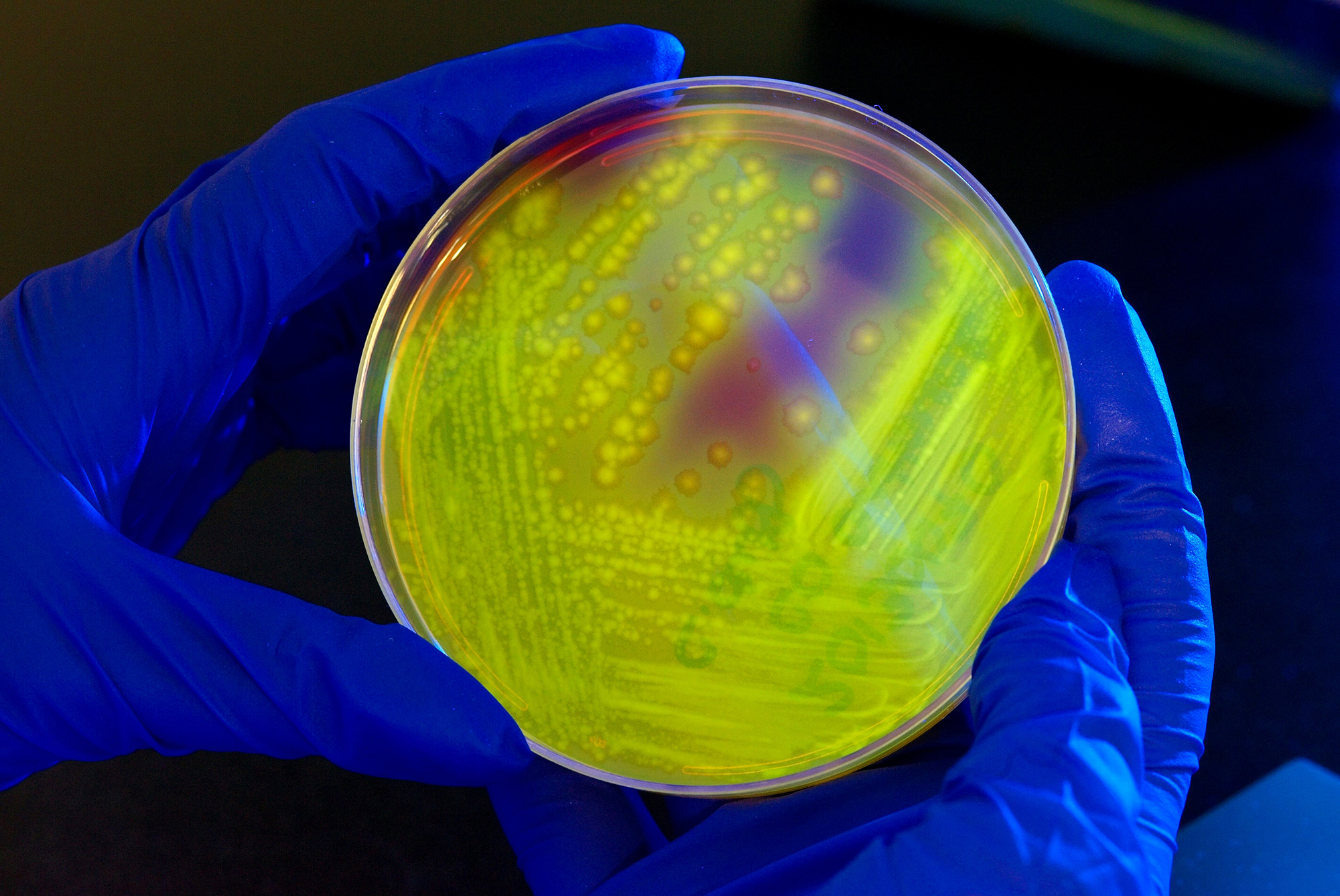Edible CRISPR Could Replace Antibiotics

As resistance to antibiotics grows in the U.S., researchers are looking for new ways to fight germs like Clostridium difficile, a bacterium that can cause fatal infections in hospitals and nursing homes.
One way to do that: a “CRISPR pill” that instructs harmful bacteria to self-destruct.
CRISPR is the powerful gene-editing technology already being explored as a way to precisely edit human genes to cure diseases (see "Can CRISPR Save Ben Dupree?"). But the technology’s versatility is such that it’s being studied for a huge range of other uses. Just last week scientists in Boston showed they could craft CRISPR into cheap, simple diagnostic tests.
Now scientists want to turn it into ultra-precise antimicrobial treatments to “specifically kill your bacteria of choice,” says food scientist Jan-Peter Van Pijkeren of the University of Wisconsin-Madison.
While not a household name, Clostridium difficile tops the U.S. Centers for Disease Control and Prevention’s list of urgent drug-resistant threats. A 2015 study by the agency found that the bug caused nearly half a million infections in Americans, including 15,000 deaths.
CRISPR was actually discovered in bacteria. In fact, the system is an immune defense bacteria use to fend off invading viruses called bacteriophage.
The way it works is that bacteria store memories of viral DNA in their own genomes as “clustered regularly interspaced short palindromic repeats”—or CRISPRs. They use this memory, plus a DNA-slicing enzyme known as a Cas to recognize and chop up the genes of invading bacteriophage.
Van Pijkeren’s idea is to use bacteriophage to send a false message to C. difficile, one that instead causes the bacteria to make lethal cuts to its own DNA.
To do it, Van Pijkeren lab is developing bacteriophage capable of carrying a customized CRISPR message. On their own, the bacteriophage would quickly get broken down by stomach acid. So to get the viruses into a person, Van Pijkeren plans to add them to a cocktail of innocuous bacteria, or probiotic, that a person could swallow as a pill or a liquid.
Van Pijkeren compares the probiotic to a “mothership.” As the probiotic bacteria pass through a person’s intestinal tract, the bacteriophage would burst forth and infect any nearby C. difficile, causing them to hack up their own DNA.
Van Pijkeren says the probiotic is still in early stages of development and hasn’t been tested in animals. However, researchers have previously shown that using bacteriophages to trigger CRISPR can efficiently kill skin bacteria and might also help combat Shigella sonnei, a diarrheal infection common in the developing world.
A few companies, including Eligo Bioscience in Paris and Locus Biosciences, a spinout from North Carolina State University, have started to pursue CRISPR-based antibiotics commercially.
The appeal of using CRISPR is that such drugs would be very specific—theoretically, they would kill a single species of germ while leaving beneficial bacteria intact. Broad-spectrum antibiotics, by contrast, kill off large swaths of both good and bad bacteria. In fact, the overuse and abuse of conventional antibiotics is what leads to resistance in the first place.
“As long as we house patients together in a hospital or in a nursing home and we give a lot of them antibiotics we’re going to have a problem with C. difficile,” says Herbert DuPont, director of the Center for Infectious Diseases at the University of Texas.
That’s why alternatives like the one Van Pijkeren’s is developing are greatly needed. However, Peter Fineran, a microbiologist at the University of Otago in New Zealand, says “there is still quite a long way to go before this replaces our current antibiotics.”
He says one challenge in deploying the approach against more types of bacteria will be finding suitable bacteriophage. That’s because each type tends to infect only specific bacteria. Fineran predicts CRISPR will become “a complementary tool in the arsenal against the rise in antibiotic resistant and pathogenic bacteria.”
Deep Dive
Biotechnology and health
How scientists traced a mysterious covid case back to six toilets
When wastewater surveillance turns into a hunt for a single infected individual, the ethics get tricky.
An AI-driven “factory of drugs” claims to have hit a big milestone
Insilico is part of a wave of companies betting on AI as the "next amazing revolution" in biology
The quest to legitimize longevity medicine
Longevity clinics offer a mix of services that largely cater to the wealthy. Now there’s a push to establish their work as a credible medical field.
There is a new most expensive drug in the world. Price tag: $4.25 million
But will the latest gene therapy suffer the curse of the costliest drug?
Stay connected
Get the latest updates from
MIT Technology Review
Discover special offers, top stories, upcoming events, and more.